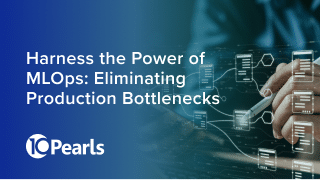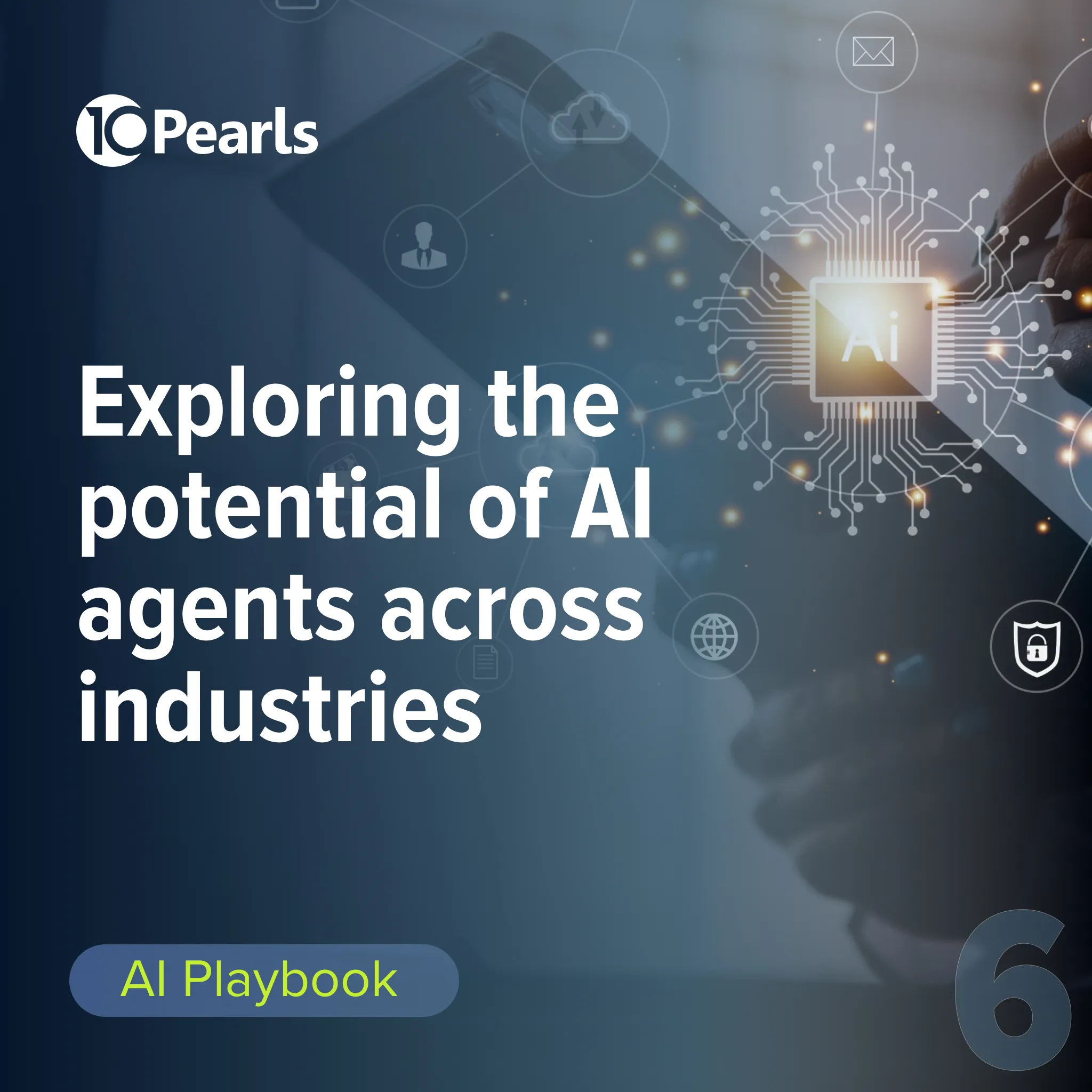

Harness the Power of MLOps: Eliminating Production Bottlenecks
As more and more enterprises begin to integrate Artificial Intelligence (AI) and Machine Learning (ML) into their operations, there’s an inevitable truth that plagues many of them from successfully executing or sustaining their initiatives. Numerous reports have revealed that only 54% of Al projects make it to production, with some surveys reporting failure rates above 80%.
This begs the question: Why are so many projects failing to reach the production stage, and what can enterprises do to overcome these obstacles?
In this article, we’ll delve into the widespread challenges that cause AI and ML projects to fail or fall apart, explore how Machine Learning Operations (MLOps) serves as a pivotal solution in addressing these hurdles, and provide a detailed guide for introducing and implementing MLOps practices within your organization.
Identifying Production Bottlenecks
The lifecycle of an ML project is complex and involves multiple stages, from data preparation and model training to deployment and model monitoring. Each stage comes with its own set of difficulties. Understanding their significance and effect within AI and ML models is the first step toward mitigating their impact.
While production bottlenecks can come from a variety of sources, there are reoccurring issues that enterprises fail to consider or neglect overtime. If these issues escalate, they can lead to delays in deployment, increased cost, or reduced model performance.
Let’s look at common production bottlenecks that have caused even the most well-planned projects to miss the mark.
Data Quality: Poor quality or inconsistent data can significantly affect the performance of ML models. Unorganized, outdated, or irrelevant data is often a significant bottleneck. Ongoing model retraining is critical for ensuring data quality.
Model Scalability: As models move from development to production, they must handle larger datasets and serve more users, requiring more proactive and comprehensive scaling strategies.
Integration Challenges: Integrating ML models into existing production systems can be complex, especially when dealing with legacy systems or those not designed with ML in mind.
Model Monitoring and Maintenance: Once deployed, models must be continuously monitored and updated to account for changes in data patterns. Model retraining is critical.
Not addressing these issues can not only lead to bottlenecks in your ML model but larger problems within your organization, like discouraging innovation, holding back the adoption of new technologies, and limiting your business’s competitive edge in the digital marketplace.
Luckily, Machine Learning Operations (MLOps) can offer a structured approach and tremendous value in streamlining production workflows, overcoming these hurdles, and accessing the full potential of your AI and ML models.
How MLOps Solves Production Bottlenecks
Machine Learning Operations is a set of practices aiming to unify ML system development and ML system operations. It borrows from the principles of Development Operations (DevOps) but is specifically tailored to address the unique challenges of deploying and maintaining ML models. It helps streamline the end-to-end machine learning development process, making it more efficient and effective.
Enhancing collaboration is at the core of MLOps. Ensuring that the data scientists who develop the models and the operations teams who are in charge of deployment and model monitoring can work together seamlessly is critical to successful deployment. This collaborative approach ensures that models can be developed, launched, and updated rapidly and reliably, reducing the time to market for new features and improvements.
Incorporating automation in the ML workflow is crucial in the MLOps process. From ensuring continuous integration and seamless delivery of ML applications to ongoing model retraining with fresh data, automation not only upholds model accuracy and performance but also empowers teams to experiment and iterate on models with speed and agility.
The Value of Automation in MLOps
There are key areas where MLOps leverages automation to improve the efficiency and reliability of ML systems and foster a culture of continuous improvement and innovation.
Continuous Integration (CI): Automates the process of integrating code changes from multiple contributors into a single project. In the context of ML, CI involves the automatic testing of code and models to ensure high-quality builds.
Continuous Delivery (CD): Ensures that code changes are automatically built, tested, and prepared for a release to production. CD in MLOps streamlines the deployment of ML models, making the process faster and reducing manual errors.
Continuous Training (CT): Addresses the need for models to be retrained with new data continuously, ensuring that they remain accurate and effective over time. CT automates the process of model retraining and redeployment, incorporating new data without manual intervention.
To fully illustrate how CI, CD, and CT fit into and impact the ML workflow, take a look at the infographic below:
Without these core elements, the full capacity of your AI/ML model or your team cannot be fully realized, leading to wasted resources and missed opportunities. To understand the impact of MLOps practices and how they’ve helped organizations facilitate smoother pathways from development to deployment, let’s explore some real-world examples.
REAL-WORLD APPLICATIONS OF MLOPS
Enhancing Video Game Animation
For this pioneering video game animation company, MLOps has revolutionized the way animations are developed for non-playable characters (NPCs). By utilizing MLOps to manage multiple data versions and train several neural networks, they successfully created sophisticated models that accurately represent a variety of movements. This process involved collecting vast amounts of motion capture data to train models that could distinguish and replicate different types of movements.
The implementation of MLOps practices, including CI/CD pipelines for model development and deployment, allowed them to dramatically reduce the time needed to integrate new animations into games. This not only expedited the development cycle but also ensured high-quality, lifelike animations. By automating the model retraining and updating of these models, the video game animation company could continuously improve animation realism based on new data, ensuring that characters moved in more natural and varied ways.
Transforming Image Processing with ML Pipelines
An innovative Digital Genealogical Search company designed an application to connect people with their relatives through old photographs. They leveraged MLOps to tackle the complex challenge of processing and analyzing images. By developing ML pipelines that could process images based on metadata such as person names, locations, and image quality, the biotech company created a powerful tool for restoring, rotating, and extracting faces from photographs. Additionally, face similarity algorithms were trained to identify potential familial connections across the globe.
MLOps played a critical role in managing the diverse and ever-expanding dataset of images, ensuring that models were continuously trained on new data to improve accuracy and performance. The automation of these ML pipelines enabled the biotech company to efficiently process images at scale, restoring quality and extracting valuable insights from even the most degraded photographs. This innovative use of MLOps not only streamlined the image processing workflow but opened new possibilities for connecting people with their heritage and lost relatives.
CONCLUSION
Bringing MLOps to Your Business
Adopting MLOps allows organizations to drastically reduce the complexity of managing and maintaining ML models. However, the transition to an MLOps-driven workflow requires strategic planning, investment in the right tools, and a commitment to cultural change within a company. Below, we provide a roadmap to guide you as you implement MLOps practices into your organization.
1. Assessment and Planning
Begin with a thorough assessment of your current AI/ML workflows and identify key bottlenecks. Develop a clear MLOps strategy that aligns with your business goals, detailing the processes, tools, and resources that will be required.
2. Build a Cross-functional Team
MLOps requires collaboration across data scientists, developers, and IT operations teams. Building a cross-functional team facilitates transparency and unity between departments, while ensuring that different perspectives are considered as you integrate MLOps practices. Version Control Systems, like Git, are useful for managing code changes and collaboration.
3. Invest in the Right Tools
Select tools and technologies that support the automation of CI/CD pipelines, data validation, model monitoring, and scalability. Compatibility with existing systems and scalability should be key considerations.
4. Implement Continuous Integration and Delivery
Establish CI/CD pipelines for your ML models to automate testing and deployment. CI/CD tools, like Jenkins or GitLab CI, automate the testing and deployment of models. This reduces manual errors and accelerates the transition from development to production. Containerization orchestration tools, such as Docker and Kubernetes, are also useful for facilitating scalable deployment of models across environments.
5. Focus on Continuous Training and Monitoring
Implement systems for continuous model retraining with new data and continuous model monitoring for performance. This ensures models remain effective and accurate over time. Data versioning tools, such as DVC for example, help manage and version datasets to ensure reproducibility and data quality.
6. Iterate and Optimize
MLOps is an ongoing process. Regularly review and optimize your MLOps workflows based on operational feedback and evolving business needs. ML experiment tracking tools, like MLflow and TensorBoard, are valuable for tracking experiments, model performance, and lifecycle management.
Insights for Integrating MLOps into Existing Production Pipelines
Consider beginning with a pilot project to demonstrate the value of MLOps and refine your approach before scaling across the organization. Foster a culture of collaboration and encourage ongoing communication and collaboration between teams to bridge the gap between development and operations.
Most importantly, invest in training for your team to build the necessary skills and understanding to ensure success in your MLOps practices. Establish key performance metrics to evaluate the impact of MLOps on addressing production bottlenecks and improving operational efficiency.
Your Journey Forward
The adoption of MLOps is not merely a technical endeavor but a strategic investment that impacts your organization's ability to innovate and compete. By properly leveraging MLOps, your business can navigate the widespread challenges that have stifled so many AI and ML initiatives.
As we look to the future, the role of MLOps in facilitating the successful deployment and management of AI and ML models will only grow in importance. Organizations that proactively adopt MLOps practices will be better positioned to harness the transformative power of AI and turn bottlenecks into opportunities for growth and innovation.
Teaming up with an experienced and knowledgeable AI services company like 10Pearls offers a significant strategic advantage. With our extensive experience in managing AI and ML projects, we offer guidance that will not only allow your business to navigate production bottlenecks more effectively but unlock new levels of efficiency and effectiveness within your operations.







